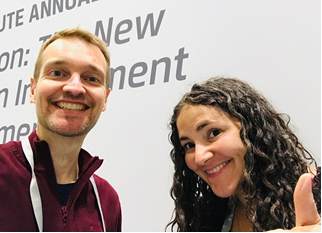The Science of Happiness
by Lance Gunkel CFP® CFA Managing Director | July 17, 2019

A few years ago, at the suggestion of my sons, we made some videos and uploaded them to YouTube. As a dad, I enjoyed the process of making the videos together. We laughed at our meager production equipment (an iPhone and a ladder) and the amount of dead air while filming (never were they afraid to speak their mind until I turned the camera on). However, my boys were mostly focused on the number of “likes”, views, comments, and becoming YouTube stars.
This drive for “likes” lines up naturally with the notion that increased popularity will make us happy. When people are asked what will make them happy, surveys show most respond with more money, career advancement, heightened popularity, and material possessions (bigger homes, fancier cars, nicer clothes).
Research also shows this drive for “more” is generating an increasing amount of anxiety. This may be the reason that Dr. Laurie Santos’s new class at Yale — “Psychology and the Good Life” — is the most popular class in the college’s history. Dr. Santos thought a dozen or so students would register, but, after a few days of registration, there were 300 registrants. In six more days, that figure grew to 1,200 students, or one-quarter of the student body!
The course teaches undergraduates how to lead a happier life and how our natural tendencies actually drive us to seek things (such as money and possessions) that make us less happy. While attending a financial planning conference in London this past May, I was fortunate to spend an hour talking with Dr. Santos, who was a featured speaker at the conference.
Dr. Santos points to research by Sonja Lyubomirsky which reveals money can’t buy happiness. Lyubomirsky performed a study that asked people making $30,000 per year what annual salary would make them happier; the average answer was $50,000. She then asked the same question of those making $100,000; their average response was $250,000. The more money you make, the more money you believe it will take to make you happier — the continual search for “more.”
It is Dr. Santos’s objective to redirect people towards behaviors they can change, such as thoughts, actions, attitudes, that can make them happier.
In simple terms, there are four things her research shows can bring about greater happiness:
1. Practice gratitude and optimism
Make a list or tell others of one (or more!) thing you’re thankful for that day. In our household, we go around the dinner table sharing what we call our “favorites and thankfuls” — one thing that day we’re thankful for and our favorite part of the day. A practice that seemed a little cheesy at first has become one of our family’s favorite rituals.
2. Savor life’s pleasures (be mindful)
Step outside of an experience and take time to appreciate it. Do you love ice cream? Instead of eating it mindlessly at the kitchen counter, think about its taste and texture, and the feeling you have while enjoying it.
3. Take time for yourself (time affluence)
Happy people invest time in themselves by going to the gym for a workout, running outside, getting proper amounts of sleep, or meditating to relax the mind.
4. Invest in experiences
Buying “stuff” loses happiness value over time, but you will remember experiences (such as concerts and vacations) for a long time.
Dr. Santos told me the key is to integrate these four principles into one’s daily habits. She suggests a rewiring program, which includes daily reminders to write down a gratitude list, a mindful experience, and the amount of time you spent on yourself (i.e. exercise, getting restful sleep, meditating, etc.).
The course’s popularity is not limited to Yale. A person can now take the course for free at Coursera. In addition, Dr. Santos told me she is planning a podcast series produced by Pushkin, the brainchild of Malcolm Gladwell — so be on the lookout for that this fall.
I’ve had our company leadership team go through Dr. Santos’s class. I have enjoyed seeing how small everyday changes have impacted my days in a positive way. If I woke up feeling less than chipper, a drive through the Starbucks to pick up a coffee — and then paying for the coffee of the person in the car behind me — lifted my spirits. I am always amazed at how simply serving another person can shift my mindset.
I am still working on my mindfulness and gratitude, and I’m happy with that today. As I model these principles to my boys, I have great hope that someday they will focus less on how many “likes” they have on their YouTube videos, and more on gratitude, optimism, mindfulness, proper care of their mind/body/spirit, and serving others.

